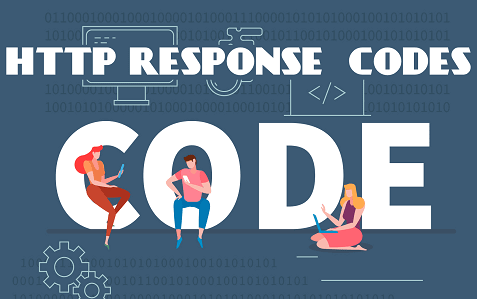You may have encountered several HTTP error codes when browsing the web or trying to access a website. Status codes in the Hypertext Transfer Protocol (HTTP) are three-digit numbers that indicate the nature of the fault you may be encountering. You may have encountered the dreaded “404 not found,” “403 banned,” “505 gateway time out,” and so on. Here at errorcodeshero.com, we have the answers to these problems. Read More
These error messages explain why you are now unable to see the specified resource(s). Several distinct blunders may be at play here. Error codes beginning with 4XX indicate that the problem is on your end, whereas those beginning with 5XX indicate that the issue is on the server’s end.
Please read on to find out more about these problems and the reasons you’re encountering them. We’ll go over some of the most common hiccups and where people typically go wrong. Okay, so let’s begin.
Firstly, a 404 Not Found error has occurred.
Sadly, this is one of the most common blunders made. This error message indicates that the resource you tried to access is no longer operational. It means that the user can connect to the server, but the server can’t give the user the resource or file they asked for. Learn More
There are a few potential causes of error 404. Make sure, if you run into this problem, that
No typos have been made by you.
The URL has not been modified in any way, including the addition of any extra letters.
There is no chance that you are attempting to view a nonexistent web page.
Most likely, you are looking at the most up-to-date version of the site. Older content is often moved to different URLs so that it can be updated regularly.
The 403 Forbidden Error
The user has submitted a valid request, but the server is refusing to fulfil it, as shown by the 403 prohibited error. This error happened because either the site owner doesn’t want visitors or the user doesn’t have the right permissions to see the information.
It’s in your hands to a certain extent to figure out how to fix this issue. You will need to get in touch with the website’s owner to receive authorization to visit the website.
Third, a server-side error has occurred.
This is a “catch-all” code error, another name for it. Sadly, the server encountered an unforeseen problem and is unable to establish a connection to the requested website. This error message could show up, for example, if the site is getting a lot of traffic and can’t handle your request to get in.
The cause of the “500 internal server error” is not on your end, but there are still a few options for fixing the problem. As a first step, try refreshing the page. In high-traffic situations, refreshing the page may assist the server in finally processing your request. One other thing you can do is delete the cookies and cache from your browser. (You’ll find the option in your browser’s preferences).
Fourthly, there was a 503 Service Unavailable.
This glitch may only be an issue for the time being. This error occurs when the web server is temporarily overloaded or down for maintenance. There was a problem, but the message said the service would be available soon.
No reasonable compromise exists for this issue. You can keep refreshing the page or trying again later, and eventually the problem will go away.
Timeout at the Gateway (Error 504)
An issue with server-to-server communication causes a 504 gateway timeout error. If you try to browse a website that has another server in the background sending data to the server you’re already connected to, you may run into this issue. So, the server doesn’t get this information in time, which causes a 504 error.
Since this is a network fault, only individuals familiar with network infrastructure can fix it. Your only option at this point is to keep refreshing the page every few minutes. In theory, this should fix the problem.
Conclusion
In this article, we’ve covered some of the most common HTTP error codes and the solutions to those errors. We think it will be easier for you to find and fix problems with your web servers and applications from now on.
Don’t be shy about letting us know in the comments area if you’re still having issues after trying the solutions we provided.

